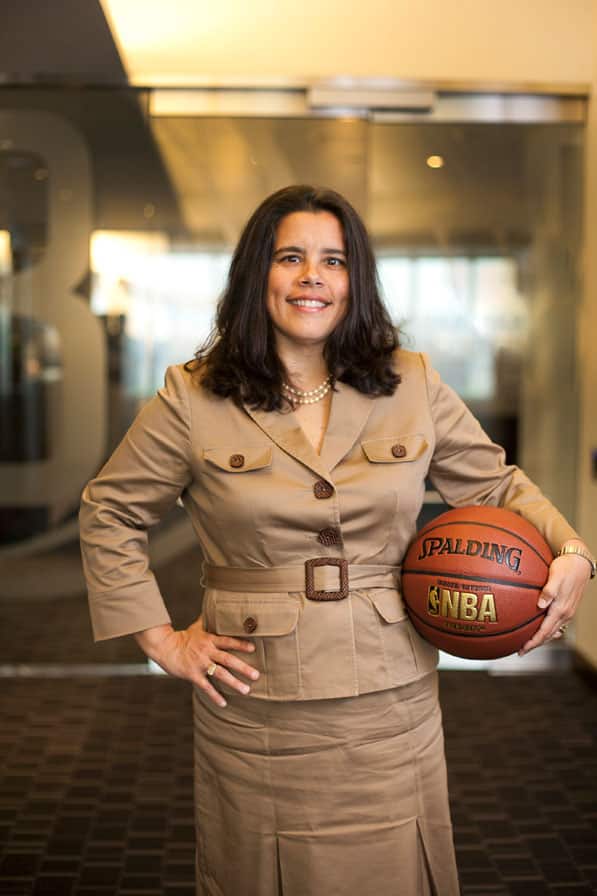
PHOTO: ST JOHN KNITS, INC.
A year after I joined the company, I noticed we needed to have some organization within IT. We didn’t have a help desk or a good support-process environment. I recommended consolidating a couple of administrators into a group creating a help desk and building a network operations team. In 2001, I became manager of network operations. Then two years later, the director of IT left and I took his role. In 2006, I was promoted to VP of IT infrastructure. Today, I manage the company’s IT infrastructure and IT development services team.
In 2010, I was charged with designing an infrastructure to accommodate new point-of-sale and clienteling systems. By using VMware, we were able to build virtual servers to house all our point-of-sale, retail back office, and clienteling systems into a private cloud. Now, instead of having 25 physical servers, we have five physical hosts clustered with 10 terabytes of storage. Our server footprint is shrinking, which also reduces our carbon footprint. In addition, we saved close to $10,000 in one year just in hardware- maintenance costs and will continue to save more in the future by converting old physical servers to virtual machines.
A big project we’re looking at is moving the data center into a colocation facility—an outsourced facility managed by a carrier or third party. They sell or lease the space, power, rack, cooling, and security, which will relieve us of the power that we consume. It’s going to save us some energy, as well as improve our uptime to our retail stores and corporate [headquarters].
In the past, we had three help desk groups—ERP [enterprise resource planning], retail, and corporate—and customers would call in through multiple numbers. We have since consolidated everything. We implemented a voicemail system that delivers the request to the help desk team as an e-mail audio attachment and it can be listened to via mobile phone or computer. As a result, everyone gets a call back within 15 to 20 minutes.
I like waking up every morning knowing that the systems are operational, and if I can continue to improve our systems and infrastructure, I will always look for those opportunities. I constantly stay abreast of all the latest technologies to see what’s out there and what will be a benefit for St. John.
If there’s an outage or system failure, I’ve learned not to panic, because it becomes a domino effect. If the leader panics, everyone else panics. So I always keep my composure by understanding what the issue is, identifying the incident, and engaging the right resources that can help me mitigate the incident. It’s a teamwork approach.
There is an internship program here at St. John. I often communicate and become approachable to new talent by offering insights in IT. Young employees tend to want to rush things and I guide them by breaking things down, first asking what is the goal they want to accomplish, and then what are the milestones they need to reach to achieve that goal. This helps them easily see and achieve that goal.
I would like to be chief information officer within the next five years. I observe my existing CIO to learn more about the business strategies and understand all areas, such as marketing, sales, retail, and manufacturing. I also network with CIOs and VPs in other companies in Orange County and LA County. I try to attend at least four seminars a year and I do a lot of reading. I would tell any person who wants to follow in my footsteps to never stop learning. Whether it’s reading a book, listening to podcasts, or watching a free course online, take that opportunity.

